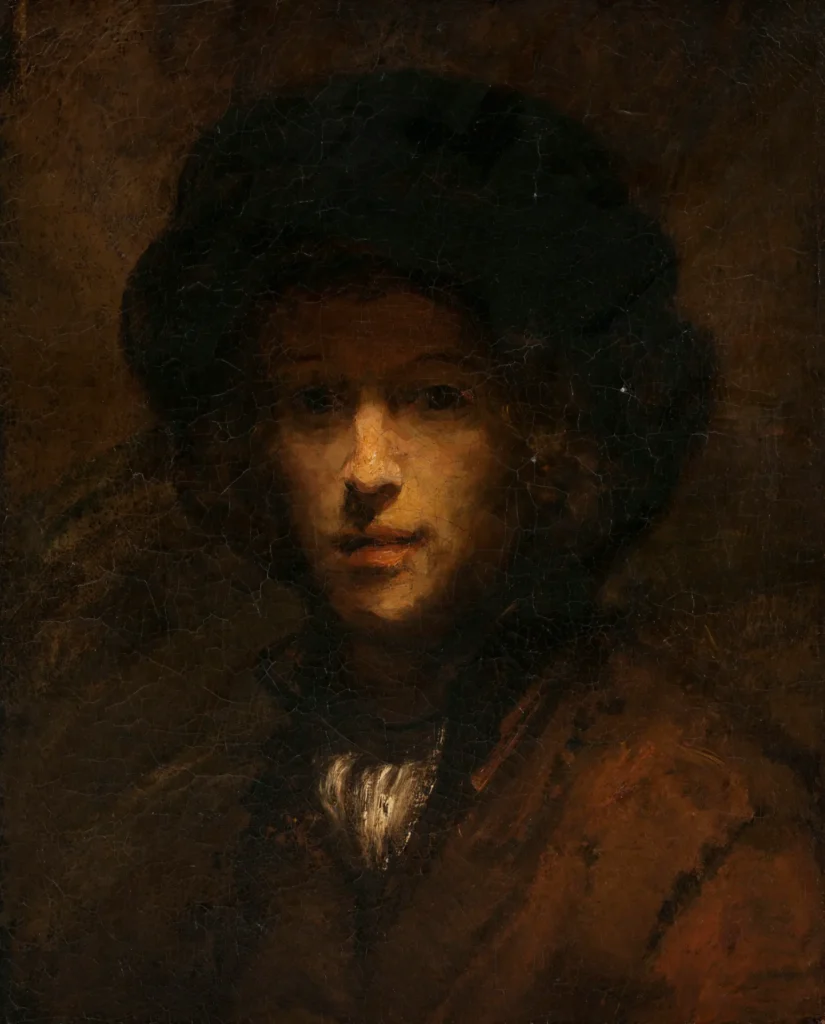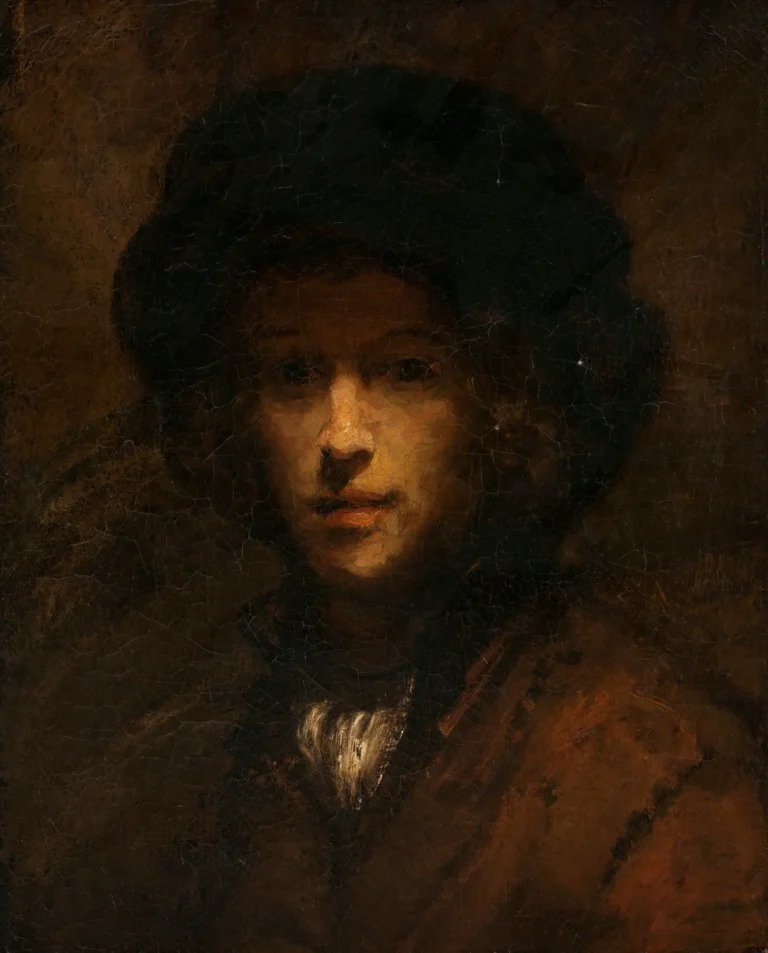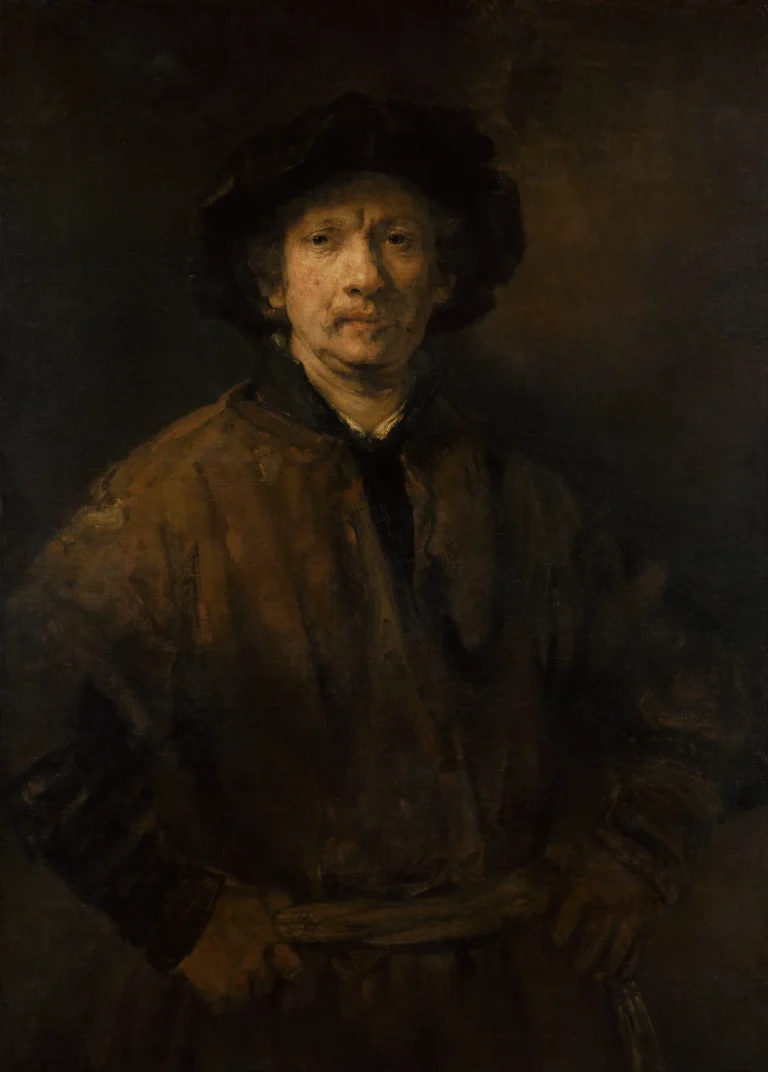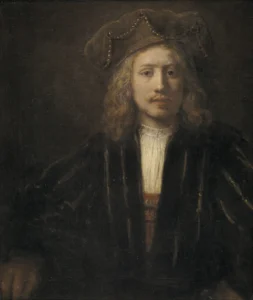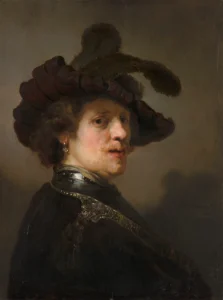Titus, the Artist's Son
This notable portrait of Titus van Rijn, painted around 1657 by the renowned artist Rembrandt van Rijn, captures the essence of the artist's only surviving son at the age of 16. Clad in a richly detailed sixteenth-century Venetian costume, Titus is depicted with an expression that reflects the weight of responsibility he bore during a tumultuous time for his father. The dramatic lighting, skillful use of chiaroscuro, and reduced color palette create a lifelike presence, enhancing the emotional depth of the portrait.
Year 1657
About the Artwork
The portrait of Titus van Rijn was created at a time of personal upheaval for Rembrandt, following his declaration of bankruptcy in 1656. Titus, his only child with Saskia van Uylenburgh, was emerging into young adulthood and taking on greater responsibilities in managing the family affairs. This complex backdrop arguably influences the serious expression captured in the portrait, which speaks to the close bond between father and son. Rembrandt’s choice to adorn Titus in a rich, historical costume showcases his innovative approach to portraiture, employing clothing as a tool for depth and narrative in his work.
Did You Know
Liked what you see? Add it to your collection.
Enjoyed reading? Share it.
... continued
Creation and Subject
The portrait, titled "Titus, the Artist's Son," was created around 1657. It depicts Titus van Rijn, Rembrandt's only surviving child with his first wife, Saskia van Uylenburgh, at about the age of 16.
Appearance and Costume
In the portrait, Titus is shown wearing a sixteenth-century Venetian costume, complete with a gold earring and chain, and a red beret that complements his voluminous curls. This attire reflects Rembrandt's practice of dressing his subjects in various historical and fantastical costumes to add depth and complexity to his portraits.
Artistic Technique
Rembrandt employed his characteristic use of chiaroscuro, with the light coming from the left side, casting the right side of Titus's face in strong shadow. This dramatic lighting, combined with Titus's position in the foreground, creates a lifelike and engaging image. The portrait uses a reduced color palette with shades of brown, accented by the red in the beret, hair, and lips.
Historical Context
The portrait was painted during a period of significant financial and personal turmoil for Rembrandt. In 1656, Rembrandt had declared bankruptcy, and Titus had been given more responsibility in managing his father's affairs. This context may be reflected in Titus's serious demeanor in the portrait.
Provenance and Authenticity
The portrait is part of the Wallace Collection in London and has never had its authenticity or date questioned. It is one of the few Rembrandt paintings that have consistently been accepted as genuine without any doubt.
Other Portraits of Titus
Rembrandt painted Titus in various guises, including "Titus in Monk's Habit" (1660), where Titus is depicted in a monk's attire, possibly as Saint Francis of Assisi. This painting is housed at the Rijksmuseum in Amsterdam.




